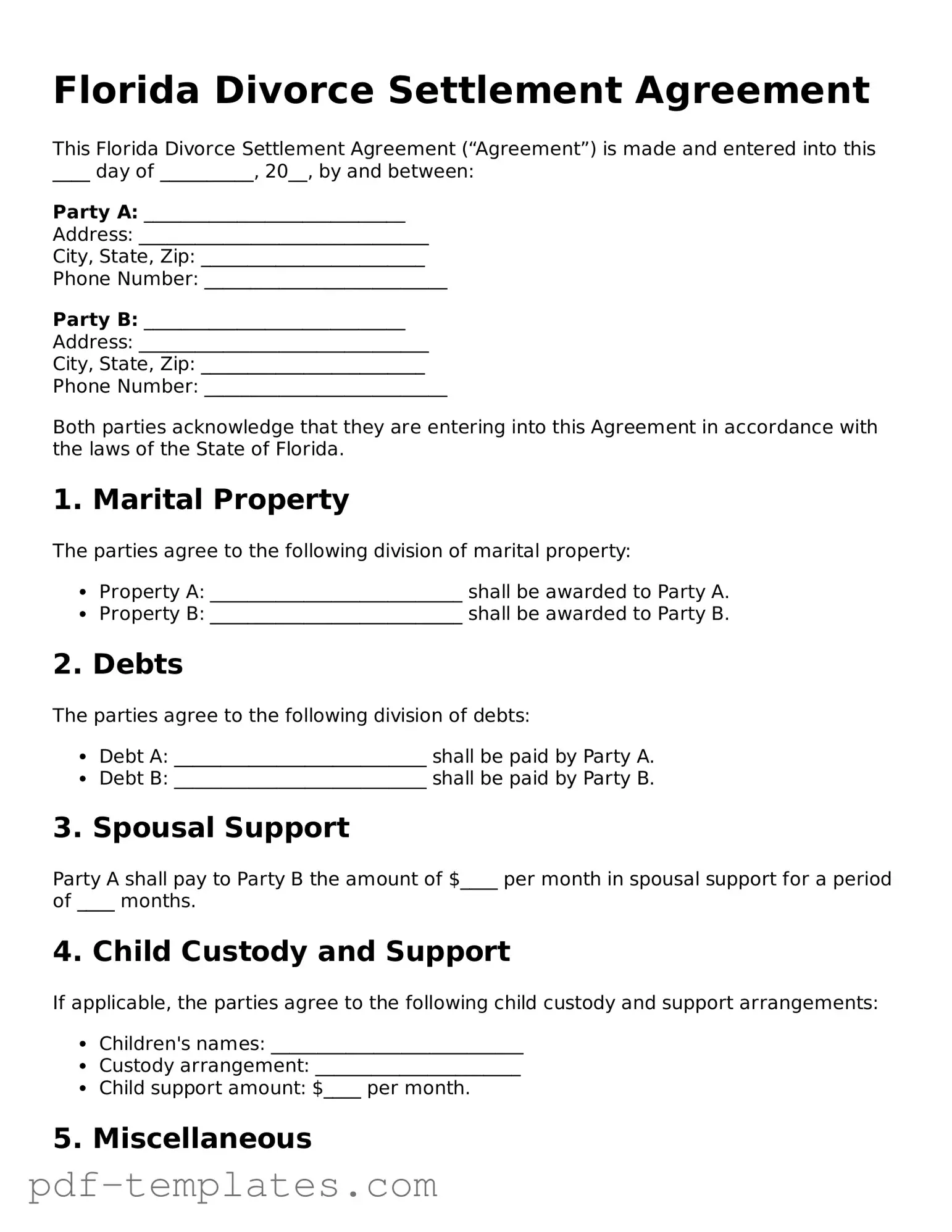The Florida Parenting Plan is a document that outlines how parents will share responsibilities and time with their children after a divorce. Similar to the Divorce Settlement Agreement, it addresses key issues such as custody, visitation schedules, and decision-making authority. Both documents aim to create a clear framework for co-parenting, ensuring the best interests of the child are prioritized. Clarity and mutual agreement are essential in both cases, fostering a cooperative environment for the family.
The Marital Settlement Agreement is another important document that is closely related to the Divorce Settlement Agreement. This document specifically details how the couple will divide their assets and debts. Like the Divorce Settlement Agreement, it aims to finalize the terms of the divorce in a way that is fair and equitable. Both documents require careful consideration of each party's needs and circumstances, ensuring a balanced outcome for both individuals.
The Child Support Agreement is also similar to the Divorce Settlement Agreement, as it addresses financial obligations related to children after a divorce. This document specifies the amount of support one parent will provide to the other, ensuring that children's needs are met. Both agreements focus on the welfare of the children and outline clear expectations to avoid future disputes regarding financial support.
The Alimony Agreement, or Spousal Support Agreement, shares similarities with the Divorce Settlement Agreement in that it addresses financial support between spouses. This document specifies the amount and duration of alimony payments. Both agreements aim to provide financial stability to the lower-earning spouse post-divorce, taking into account factors such as the length of the marriage and each party's financial situation.
The Quitclaim Deed is relevant in the context of property division during a divorce. This document transfers ownership of real estate from one spouse to another, similar to how the Divorce Settlement Agreement outlines the division of assets. Both documents ensure that property rights are clearly defined, reducing the potential for future conflicts regarding ownership.
Understanding the Texas Mobile Home Bill of Sale form is crucial for those looking to transfer ownership of a mobile home. This essential document ensures the protection of both buyer and seller during the transaction process.
The Financial Affidavit is a document that provides a detailed account of an individual's financial situation, including income, expenses, assets, and debts. It is similar to the Divorce Settlement Agreement in that it informs the court about each party's financial status, which is crucial for determining equitable distribution of assets and any support obligations. Transparency in both documents is essential to achieving a fair resolution in the divorce process.
